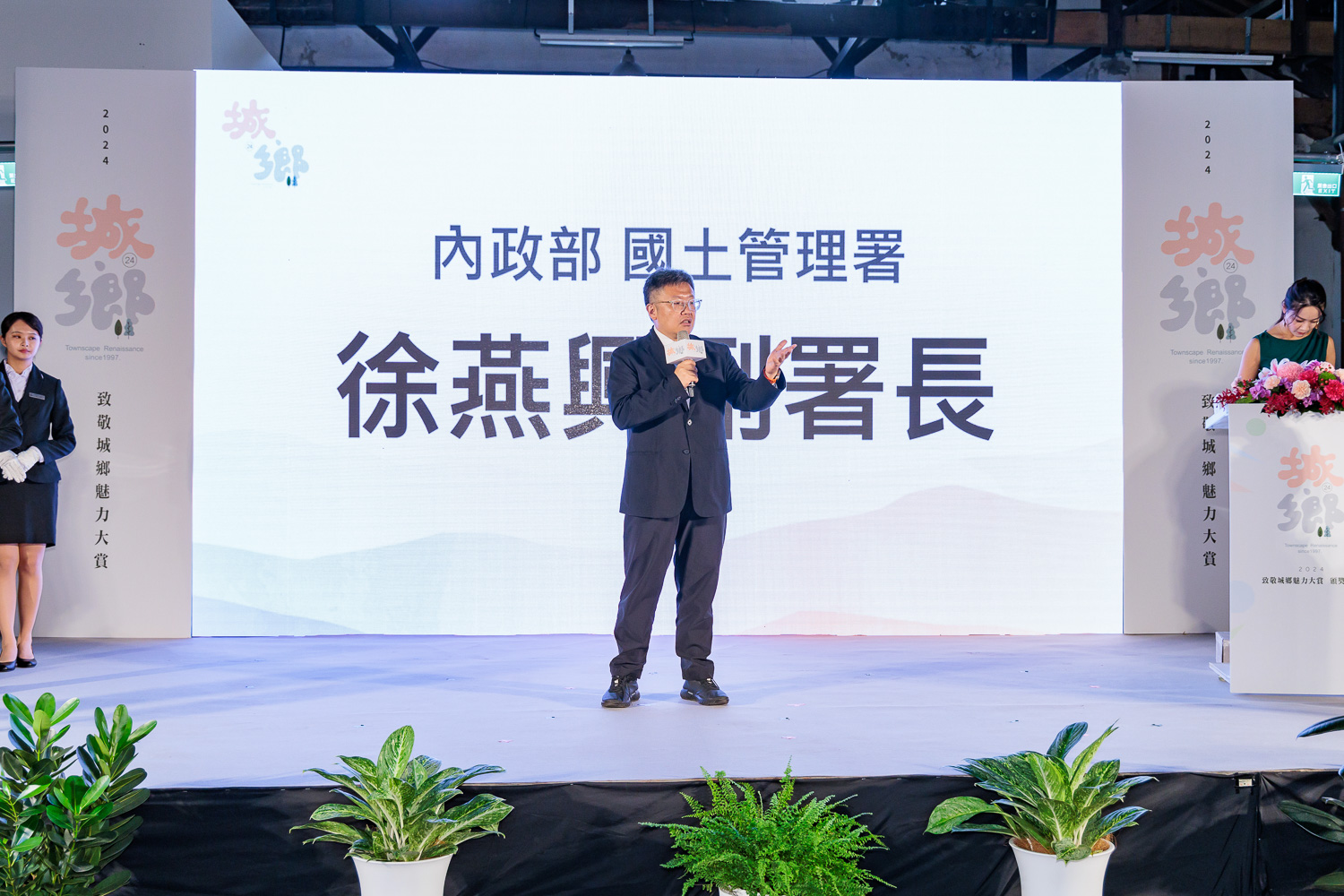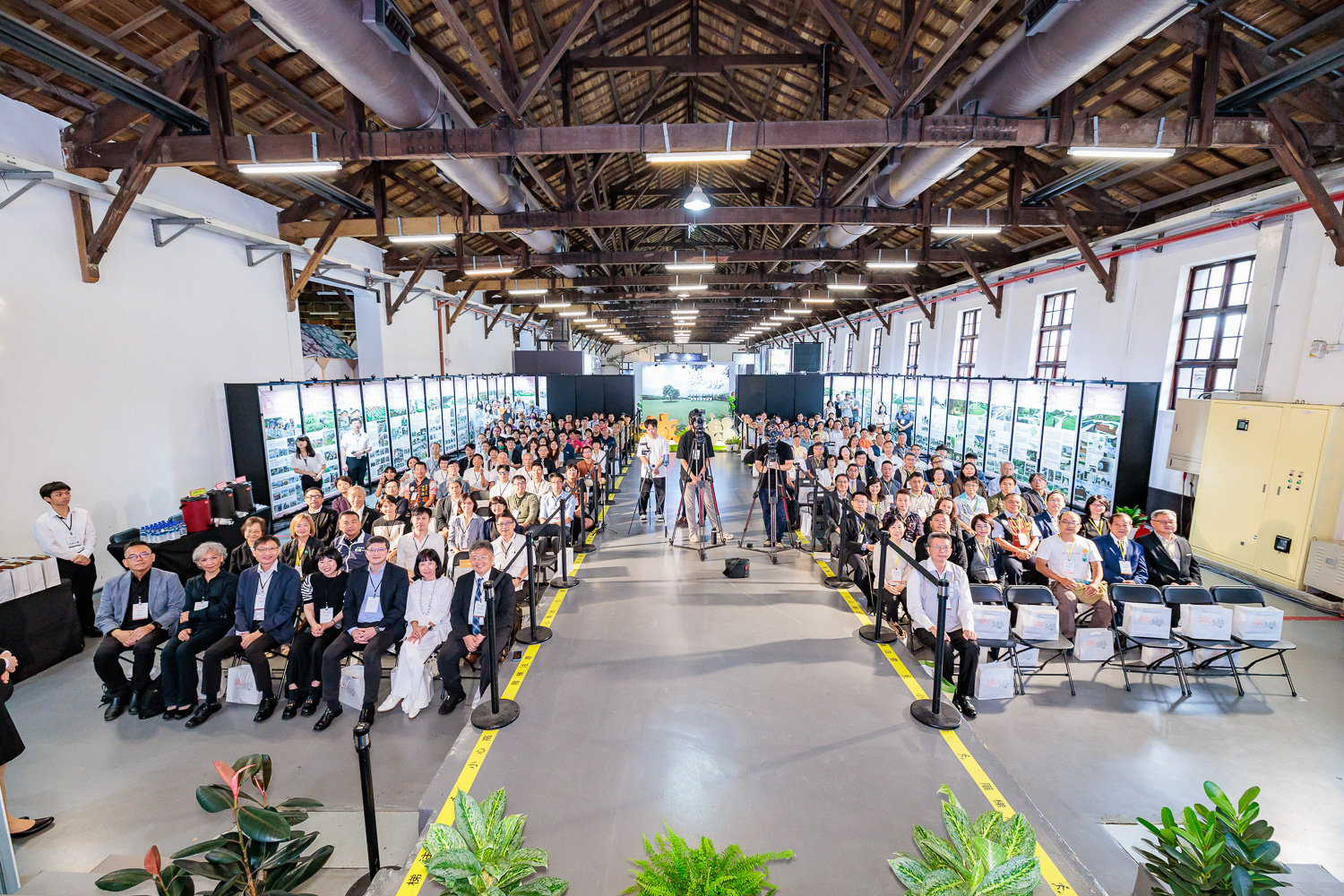2024 Urban and Rural Landscape Forum
A. Project origin:
The National Land Management Agency of the Ministry of the Interior initiated the "Urban and Rural Landscape Transformation Movement" in 1997, and has continued to promote it for more than 20 years, including the recent launch of the "Creation Plan of Urban and Rural Landscape and Revitalization Environment". In the past, it promoted culture, greenery, and a beautiful living environment, and now it implements progressive policy changes and upgrades such as environmental symbiosis, cross-domain integration, local creation, and sustainable sharing. It has made significant contributions to the restoration of urban and rural natural ecological environments, the shaping of humanistic features, and the creation of living environments.
Because the urban and rural green space system is the natural foundation that supports the urban and rural ecological environment, it is also an important public facility in urban planning, providing ecological, landscape, disaster prevention, and recreation functions. In response to current policies for climate change adaptation, human-centric environment, and net zero by 2050 in Taiwan, urban and rural green space must break away from traditional planning methods such as geometric constructions, traditional cement engineering methods, and cookie-cutter playground equipment to new approaches, such as applying ecological engineering methods, promoting "less is more" (minimalism) in design, introducing native plants, building accessible environments, energy conservation and carbon reduction, net zero carbon emissions, and the use of recycled materials. The National Land Management Agency has incorporated these new ideas into the "Urban and Rural Landscape Subsidy Design Criteria Manual" as a reference for urban and rural green space design. Therefore, to support the policy transformation of "urban and rural green living space" in the next stage and find new solutions in response to climate change, we invite relevant central ministries, municipalities, county (city) governments, general consultants on environmental landscape, community planners, and NGOs to the "2024 Urban and Rural Landscape Forum".
B. Purpose of event:
In order to find new solutions for the policy transformation of urban and rural landscapes and adaptation in response to climate change, the National Land Management Agency has previously held two "Urban and Rural Area Forums" on September 12 and 19, 2024 based on the topics of "urban and rural green living spaces policies - urban and rural transformation policies" and "urban and rural green space ecology - practical actions". Through these two regional forums (Northern Taiwan Forum and Southern Taiwan Forum), we collected information from municipalities, county (city) governments, general consultants on environmental landscape, community planners, and NGOs. Consultants, community planners and civil society groups. After consolidating their opinions, an explanation will be provided at the Urban and Rural Landscape Forum on the recommendations for each topic of the sub-regional forums. They will be used for action plans for future urban and rural landscape subsidy policy transformation and urban and rural green space ecology, and as recommendations for subsequent implementation.
In the morning session, the general consultants on environmental landscape of Taitung County Chen-Tsen Lin gave a speech on "Net Zero Urban and Rural Green Space - Transformation Policies and Practical Actions". He discussed how to implement net zero sustainable policies in the future under the full life cycle concepts in urban and rural landscape projects, and proposed suggestions for benchmark projects. In the afternoon session, Po-Hung Liu, founder of Classic & Original, gave a speech on "Providing Water and Green Space for the City - Building Urban Resilience Based on Nature". He discussed how to use landscape design to meet the living needs of residents, enhance the ecological value of the city, improve the urban climate and air quality, and enhance the city's ability to adapt to climate change. He provided suggestions for municipalities, county (city) governments, and design teams for implementing the urban and rural style subsidy plan, and satisfying the goals of the net-zero sustainability policy and ecological protection of urban and rural green spaces.
C. "2024 Urban and Rural Landscape Forum" time, location, and invitees
I. Event time: 09:30-15:30 November 21, 2024 (Thursday)
II. Event venue: International Conference Hall (R100), Institute of Applied Mechanics, National Taiwan University (No. 1, Section 4, Roosevelt Road, Da'an District, Taipei City)
III. Number of participants: 150 people
IV. Invitees:
(I) Central government agencies: National Development Council, Public Construction Commission of the Executive Yuan, Agency of Rural Development and Soil and Water Conservation of the Ministry of Agriculture, Forestry and Nature Conservation Agency of the Ministry of Agriculture, Water Resources Agency of the Ministry of Economic Affairs, Climate Change Administration of the Ministry of Environment, Tourism Administration of the Ministry of Transportation and Communications, National Park Service of the Ministry of the Interior, National Land Management Agency, Ministry of the Interior (Spatial Planning Division and Urban Infrastructure Division).
(II) Local government agencies: Deputy heads, section chiefs, implementation officers, general consultants on environmental landscape, and community planners of 22 municipalities and county (city) government agencies.
(III) Non-governmental organizations (NGOs): Taiwan Institute of Landscape Architects, the Society of Wilderness, Taiwan Parks & Playgrounds for Children by Children, Taiwan Institute of Urban Planning, Chinese Institute of Urban Design, Taiwan Community Empowering Society, Taiwan Community Alliance, Society for Environmental Education in Taiwan, Taiwan Sustainable Green Construction Union, Institute of Environment and Resources, Taiwan Green Building Council, Taiwan Regional Revitalization Foundation, Taiwan Net Zero Emissions Association.
D. Key points of the "2024 Urban and Rural Landscape Forum"
In the face of mounting challenges of climate change and extreme weather, urban and rural landscape programs have become indispensable. The project focuses on "nature-based" landscape planning and design, and is committed to reducing greenhouse gas emissions, improving climate resilience and ecological protection, and improving the long-term health and sustainable development of the residential environment. From the construction of natural carbon sinks to the integration of green infrastructure, from policy development to action levels, a more systematic and comprehensive strategy must be formulated to achieve the coexistence of ecological protection, effective resource utilization and a hospitable environment for humans. It is a critical policy that lays the groundwork for attaining the 2050 Net Zero target.
I. The goals of the next phase of the Urban and Rural Landscape Subsidy Program include the following levels:
(I) Construction and optimization of natural carbon sinks:
Use green spaces in parks and urban open spaces as natural carbon sequestration sites and transform them into important infrastructure for reducing carbon emissions, further supporting the national carbon neutrality goal and providing a comfortable environment for people to live in.
(II) Human-centric environmental design to strengthen urban resilience:
Use nature-based solutions to design a protective living environment against extreme climate risks with approaches such as plans for "replacing gray foundations with green foundations". When designing a pedestrian space based on the concept of green base, the base should first be set as a green space for plants, and then the required gray artificial spaces (sidewalks, bicycle lanes, street lights, transformer boxes, etc.) should be subtracted from the overall green base. A gray base means just the opposite. It is dominated by gray artificial space, and green spaces for plants are added afterwards.
(III) Improve biodiversity and ecological service system functions:
The most ideal sustainable city must take into account both the natural environment and the society in which people live. It must not only protect existing natural habitats, but also restore damaged ecosystems, thereby promoting soil and water conservation, reducing land loss, and improving the overall health of the ecology. In terms of the ecological service system, the benefits reaped by humans directly or indirectly from ecosystem services can be divided into four categories: Category 1: Support, which means supplying what is needed for the production of ecosystem services, such as support for soil growth and biodiversity. Category 2: Provision, which means the supply of material, such as Food and wood. Category 3: Adjustment or adaptive functions such as air purification. Category 4: Culture, such as: ecotourism. It creates biodiversity to achieve "green growth" and move towards becoming a "resilient city" with ecosystem resilience.
(IV) Integrate multi-functional green infrastructure:
Combine water resource recycling management and landscape aesthetics to build infrastructure that is both functional and of cultural and artistic value, and improve the quality and resilience of the urban environment. Green infrastructure can be divided into five aspects, including active human-centric transportation, community and open spaces, ecology and habitats, food energy and metabolism, and hydrology. If a city can carefully manage all five aspects, it will become a green city.
II. Recommended actions
(I) Inter-agency communication, cooperation, and knowledge sharing
Build an inter-agency coordination mechanism, integrate professional knowledge in the fields of landscape, architecture, engineering, and ecology, and actively attract the participation of NGOs and NPOs. Strengthen the inter-agency coordination between the central and local governments, and form a cooperation platform for co-creation and sharing to bring together data, technology, and experience and provide more flexible and scientific references for the implementation of plans.
(II) Resource allocation and flexible adjustment based on local conditions
Due to budget constraints, resources should be used flexibly, and a strategy of "adapting measures to local conditions" should be implemented to prioritize projects with high impact and feasibility. A project must combine community strength and public participation, encourage local creation, corporate sponsorship and cooperative models, maximize resource utilization, and improve resource utilization efficiency through the knowledge sharing platform to ensure efficient resource allocation.
(III) Promote civic engagement and environmental education
Design diverse mechanisms to facilitate citizen participation, such as community workshops, community activities, and participatory planning, to enhance citizens’ sense of participation and responsibility. At the same time, we must also strengthen environmental education, promote the concepts of carbon reduction and net-zero policies, communicate to citizens the impact of their actions on urban and rural policies and climate action, and lay a solid foundation for environmental education.
(IV) Intensify urban and rural ecosystem service construction and resilient construction methods
Prioritize the adoption of nature-based solutions, gradually restore and strengthen the recycling functions of natural resources, and restore the fundamental self-regulating functions of the natural environment, such as vegetation restoration, water circulation, and designs for urban wind corridors. To strengthen carbon sink construction, biodiversity protection, habitat restoration, and the overall restoration of soil and water ecosystems, technical applications must be combined with green basic technologies to gradually improve the ecological and economic benefits and comprehensively enhance urban and rural ecological resilience.
(V) Build a long-term plan with a sustainable environment as the vision
The Urban and Rural Landscape Program should formulate a long-term policy framework with the goal of attaining net zero by 2050 as the core, and set up review mechanisms for results in different stages. It must establish a far-sighted vision and action plan, pay attention to the follow-up maintenance and management mechanisms, gradually build a sustainable green space system, urban greening and cooling, and other fundamental ecological actions. It must also optimize urban and rural features every year to ensure policy continuity and progress stability.
III. Future Prospects
The ultimate goal of the Urban and Rural Landscape Subsidy Program is to create a healthier, more livable, and more sustainable green living space environment through carbon reduction, resilience enhancement, and improved ecology. This arduous and challenging work must rely on the collaborative efforts of professionals across different fields, the participation of non-governmental organizations (NGOs) and non-profit organizations (NPOs), and the consolidation of local innovation and citizen policy support from central and local governments. Only with the collaborative efforts of professionals from different fields can the long-term vision of the net zero goal be truly realized, which will also become an indispensable force in promoting the plan.
In the future, the Urban and Rural Landscape Program should have clear guiding objectives and long-term learning and coaching training mechanisms for policy planning, improve cooperation efficiency between different departments, resource allocation, and communication integration platforms, and enhance citizen participation as the main development targets. This would facilitate win-win for both the ecology and urban and social development, and lay a solid foundation for the net-zero future and a better life.


